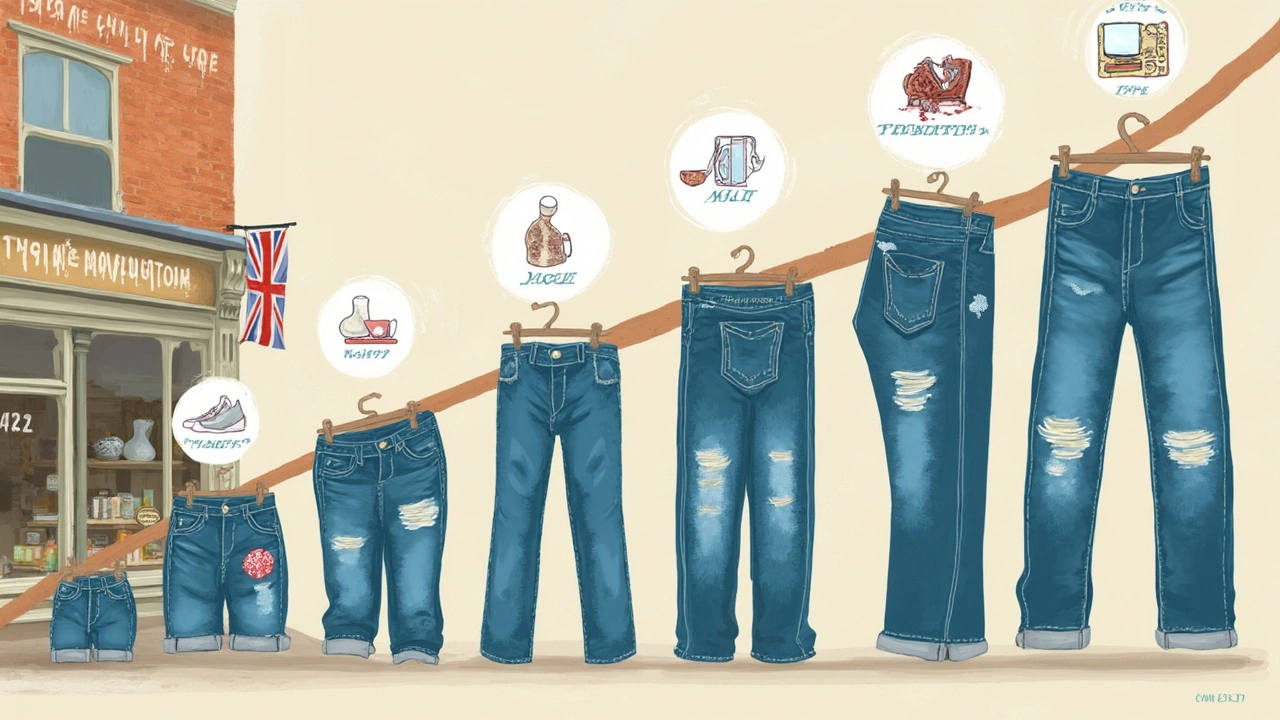This might sound odd, but think about that one shirt you stopped wearing, not because it looked bad, but because it just felt... stiff. Textile stiffness is the silent dealbreaker lurking in closets, tearing down dreams of both comfort and performance. It doesn’t just wreck your vibe by making clothes feel scratchy or your bedding crumple up wrong. Stiffness in textiles messes with how fabrics last, how they protect you, and even how good your couch looks after a year of your cat napping on it.
What Is Textile Stiffness and Why Should You Care?
This isn’t small stuff. Stiffness means resistance—a fabric’s ability to keep its shape against bending or folding. There’s a sweet spot: too limp and fabric puddles at your feet; too rigid and you might as well wear armor. People in the textile biz measure stiffness using tests like the cantilever or heart loop—yes, there’s a test that literally loops fabric and measures how floppy it is! The main thing to know is that textile stiffness shapes what that fabric can do. Picture a tent: Stiff flysheet, no leaks. Or picture a ballet costume: Stiff tutu, perfect flounce. Get it wrong and performance tanks.
Stiffness isn’t just about how a shirt hangs; it plays into abrasion resistance, drape, wrinkle recovery, and thermal comfort, especially in sportswear or uniforms. Want your yoga pants to keep their shape after 50 washes? That’s textile stiffness working together with elastane. On the flip side, think of those canvas grocery bags—stiff so they stay upright, easy to pack. A study from the Woolmark Company found that stiffer wool fabrics were better at resisting wrinkles after being squished into a suitcase. So next time your travel shirts look fresh after the red-eye, thank their clever blend of fibers and processing that dialed in stiffness.
And there’s a twist: Stiffness sends signals to buyers. Picture linen shirts—everyone expects them to be a bit crisp, not floppy. It’s part of their luxury feel. But if a jersey T-shirt is that stiff, people will ask if you washed it wrong or left it out in the sun. The market is picky about stiffness, even if we don’t have a name for what feels off.
Main Factors That Control Fabric Stiffness
Okay, this isn’t magic—it’s all about the recipe. Four things mostly call the shots: fiber type, yarn twist, fabric construction, and finishing. Start with the raw ingredient: Some fibers are naturally stiffer. Imagine cotton—soft and flexible, right? Now think of ramie, or old-school linen—both packed with cellulose, both on the stiff side. Synthetic fibers like polyester can go either way, depending on how they’re spun. Stiffness isn’t just about the fiber—how tightly it’s twisted matters. Tight, high-twist yarn can feel wiry and stiff, while loosely spun cotton yarn flops around.
Then there’s the fabric weave or knit. Picture denim: it’s a twill weave—over, under, over, under—packing threads dense and straight, making jeans stiffer. Compare that to a T-shirt knit, which loops yarns into soft, stretchy waves. Plain weaves like broadcloth feel stiffer than satin, which drapes like liquid.
The finishing process is another game changer. Calendering runs fabric through hot rollers, cranking up stiffness. Special coatings—think waterproof jackets—add both stiffness and new features. Even the dyeing process can mess around with stiffness, especially when certain chemicals stay on the fabric surface. That's why a brand-new pair of jeans feels like cardboard until you’ve washed them a couple of times.
Here’s where it gets fun: textile labs can dial stiffness in and out almost on demand, combining fiber blends, yarn design, and finishes. It’s how brands deliver those crease-resistant business shirts or the indestructible canvas backpacks. Sock manufacturers, believe it or not, have even started using a mix of cotton and nylon filaments for the perfect sock “snap” versus flaccid droop—shout out to my cat Socks for field-testing those with endless pawing.

How Stiffness Changes Fabric Performance in Everyday Life
Let’s get real: nothing’s more annoying than spending fifty bucks on gym shorts that chafe after one wash. Stiffness affects how a fabric moves on your body, how it handles sweat, and whether it holds up under pressure. High-stiffness fabrics resist wrinkling and tearing, making them perfect for uniforms, tents, and upholstery. If you have little kids or a mischievous cat, a stiffer fabric is going to take more of a beating before it gets saggy or torn. Here’s a table to show what high or low stiffness can mean for performance:
| Feature | Low Stiffness Fabric | High Stiffness Fabric |
|---|---|---|
| Drape | Floppy, flows easily | Holds shape, maintains structure |
| Abrasion Resistance | Prone to wear and pilling | More durable, resists scuffs |
| Wrinkle Resistance | Wrinkles easily | Stays crisp, fewer creases |
| Comfort (Against Skin) | Softer, more flexible | May feel scratchy or stiff |
| Moisture Management | Wicks and absorbs easily | May trap sweat, less breathable |
Check your wardrobe. Notice how those old cotton band tees turn softer as you wash them? That’s fabric stiffness dropping as the finish wears off and the fibers break in. Now test your raincoat—still stands up by itself? That’s the finish and fabric structure keeping the stiffness high for wind and water protection.
For anyone into DIY sewing, check fabric labels for “gsm” (grams per square meter) and weave type—if you want crisp edges for a wrap skirt or collared shirt, don’t buy a low-stiffness rayon. Need something cozy for lounge pants? Look for knits or gauzy cotton with a soft hand feel.
Tips for Picking and Caring for Fabrics with the Right Stiffness
Most people grab a shirt or curtain without thinking about stiffness, but it’s easy to check. Hold a fabric sample up, see how it falls, scrunch it in your fist. Does it spring back or crumple? Any store worth their salt has samples for this very reason.
- For clothing: Go softer for comfort near skin—think T-shirts, undies, pajamas. Crisp and stiffer for button-downs or jackets that need to keep a sharp shape.
- For upholstery: Stiffness rules. Softer fabrics pill quickly on sofas and lose their shape. Stiff fabrics resist sagging and look tidy longer, especially under pets and kids.
- For sports/outdoor use: High-stiffness woven synthetics keep their shape, dry fast, and withstand weather. But they hotbox sweat! If comfort’s key, balance with mesh inserts or choose knits for breathability.
Once you’ve found the right fabric, maintenance matters. Most modern detergents have enzymes that break down sizing (the chemical finish that makes new fabric stiffer). Wash jeans and jackets inside out to slow down the loss of stiffness. For curtains or anything that needs to stay structured, avoid fabric softener—it literally wrecks the finish. Got a favorite shirt that’s gone too floppy? Spray starch is your friend, but go easy—it can build up and make fabrics crispy instead of comfortably crisp.
If you’re peeking under the hood of your washing machine wondering why your bedding is softer than when you bought it—look to repeated spin cycles and heat. Both break down finishes faster. Some textile fanatics in forums I’ve seen in Australia even hand wash their drapes or stiff table linens in cold water to keep them looking good for years, though I can’t say I have the patience myself.
Want that broken-in feel without totally sacrificing structure? Italian denim mills are famous for proprietary resin finishes that soften with wear but keep backbone—those $200 jeans actually age better the more you use them.

Textile Stiffness: The Frontier of Future Fabrics
Here’s where the wild ideas come out to play. Stiffness isn’t stuck in the past—it’s actually at the bleeding edge of textile tech. Researchers in Japan have designed “smart” fabrics that change stiffness with heat, pressure, or even a blast of UV light—imagine a jacket that’s soft while you’re lounging but stiffens up when it rains. There are already shoes and athletic gear on the market using phase-change materials in fabric layers. They go stiff to support your foot during jumps and soften on the run; Adidas and Puma have both jumped into this tech.
Big outdoor companies in Australia have started using recycled PET bottles to create stiff, durable fabrics for tents and backpacks. A CSIRO project just last year launched a water-repellent, stiffened canvas that’s four times more abrasion-resistant than old cotton canvas. These fabrics last longer and use fewer resources—it’s all about dialing the right stiffness for each job.
One surprising twist: medical textiles, like wound dressings or high-tech splints, rely on engineered stiffness to hold shape or release medicine over time. NASA and Australia’s Defence Science and Technology Group have both looked into variable-stiffness suits to protect against space or battlefield extremes. It’s weird, but even fashion is starting to play along: designers use 3D printing and chemical finishes to make dresses that can fold up tight then spring open—think Issey Miyake’s pleats or those origami-inspired accessories all over Instagram.
- Textile stiffness helps bulletproof vests stop projectiles by using layered stiff aramid fibers (like Kevlar).
- Look out for “memory fabrics” in stores soon—shirts that won’t stretch out or collars that won’t flop after washing.
If all this sounds far-fetched, take a walk around any big chain store in Perth right now in 2025. You’ll spot eco-friendly stiff reusable bags, weatherproof stiffer rain jackets, and Softer-Than-Cashmere loungewear—all the results of brands geeking out over stiffness to get you the perfect product.
So, the next time you pick up a new shirt or wash those “unbreakable” canvas sneakers, stop and feel them. That stiffness isn’t just there for looks—it’s driving how the fabric works, how long it lasts, and how it’ll feel by next season. Whether you want ultimate comfort, armor against toddler spills, or a jacket that handles the crazy Perth rain, understanding fabric stiffness is a game-changer. And believe me—your future laundry will thank you.


Comments (6)
Doug Pikul
Bro this hit different 😤 I had this one pair of jeans I bought for a wedding-looked sharp, felt like a cardboard box. Wore them once, threw them in the wash with a bar of soap and a prayer. Now they’re my lazy Sunday uniform. Stiffness isn’t the enemy-it’s just the price of entry until the fabric learns to chill. Also, my cat now sleeps on them like a throne. Respect the process. 🐱
anthony perry
Stiffness = structure. Softness = decay. That’s why workwear lasts. No theory needed.
Sarah Major
People don’t realize how much this affects their mental health. That stiff shirt you hate? It’s not the fabric-it’s your subconscious rejecting control. You’re not just annoyed by the texture-you’re angry at the societal expectation to look polished. And now you’re wearing sweatpants to the grocery store because of this. It’s a crisis.
Amber Walker
OMG YES I WAS JUST THINKING ABOUT THIS TODAY!!! I bought this $80 linen shirt and it felt like a board and I was like NOPE and then I washed it like 3 times and now it’s like a cloud and I wear it every day and my partner says I look like a poet who just woke up from a nap in a vineyard and I’m like THAT’S THE POINT 💫
Nate Barker
Textile stiffness? Nah. It’s just corporate marketing to sell you more detergent and fabric softener. You think your ‘crease-resistant’ shirt is magic? Nah. It’s just coated in plastic. You’re literally wearing a disposable raincoat with sleeves. Wake up.
charmaine bull
As someone who works in textile R&D, the real breakthrough is in hybrid fiber architectures where micro-structured yarns enable programmable stiffness gradients-think localized rigidity for joint support in athletic wear while maintaining compliance in high-mobility zones. The key is minimizing interfacial shear while preserving structural integrity through post-treatment kinematics. Also, avoid fabric softener. It ruins everything. 🤓